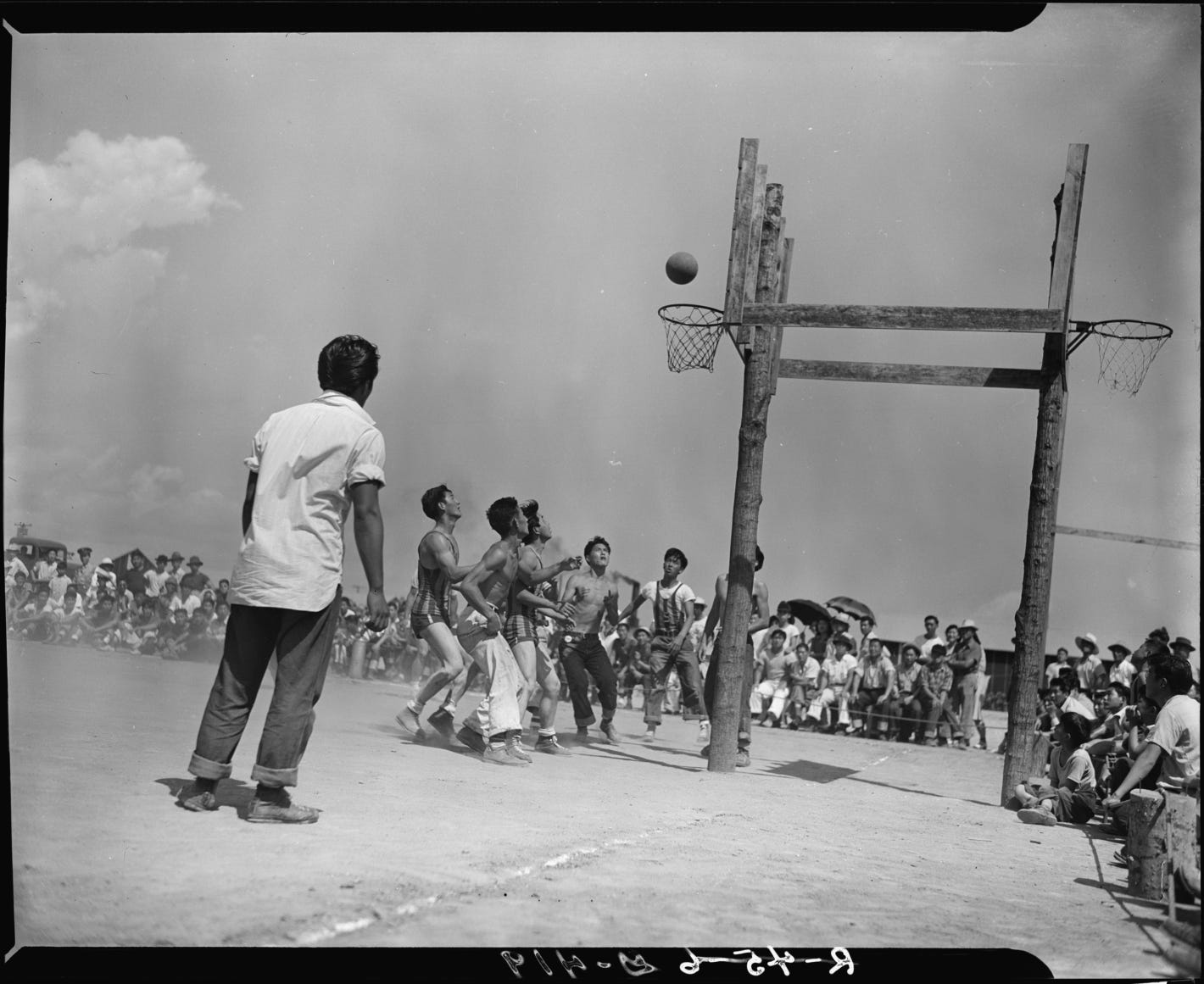Rough Notes: I Wrote About The Leagues (& The Dad!) That Built Natalie Nakase
Celebrating the first Asian American head coach of the WNBA & the beginning of my deep dive into the Japanese American basketball leagues.
As you might know, I’ve been spending much of my time reporting on women’s basketball histories in the Bay Area & California, in anticipation of the Golden State Valkyries inaugural season (more on that tomorrow, also their regular season home opener — I’ll be there!)
My latest piece for Defector is out today, all about the resilient basketball history that built the WNBA’s first Asian American head coach, Natalie Nakase. For Natalie, dedication to basketball is a thing of inheritance, part of her bloodline, delivered from her father Gary the way some parents introduce their children to religion. “Everyone always said, ‘Do you go to church?’” Natalie once recalled about her childhood. “And I was like, ‘Well, I go to basketball church, is that considered the same thing?’”

One thing that was super clear to me while writing this article is that Natalie’s relationship with her dad Gary is one of the most tender and rare father-daughter relationships I’ve witnessed in sports. “My dad was iconic, man,” Natalie told me this week after a Valkyries practice. So if you want to know what animates Natalie’s approach to coaching, her work ethic, her drive, then know all about her father Gary, her best friend in the world, who passed away in 2021.
I found Natalie’s particular family lineage, mostly in Southern California & Orange County, to be really powerful, and I was also fascinated by the larger history of Japanese American basketball leagues (JA Leagues) that have shaped this community’s love of the sport. In the JA Leagues, and in sharp contrast with many other communities, women have played basketball consistently since the 1920’s, actively welcomed to the court from a young age (which you can read more about in my piece.) As a kid growing up in Oakland, I even got to take part in the JA Leagues (& honestly, it was perhaps my favorite team basketball experience ever), see below:

For the piece about Natalie Nakase and her family’s history, I went deeeeeep into archives researching the history of Japanese Americans’ dedication to basketball, including during WWII while incarcerated inside prison camps. By the early 1940’s, many young Japanese Americans already loved playing basketball, and they continued playing after being forcibly removed from their West Coast homes by Executive Order 9066. Basketball often took place outside at the camps, on dirt courts with hoops built from reconstituted lumber, in terrible weather conditions. Nevertheless, young people in the camps took so much pride in playing.

During World War II, the Nakase family was incarcerated at the Rohwer Relocation Center, in a south east corner of Arkansas. At the time, Natalie’s grandparents were young, and in the middle of growing their family (Gary Nakase, in fact, was born into incarceration). But right there in Rohwer, in that same camp, girls from California were also competing on the basketball courts: not only for fun, but with stakes of resilience, and survival.
While writing the article, I got really obsessed with with girls basketball throughout the incarceration camps and especially with the 1942-43 girls basketball season at Rohwer. I used these amazing digital archives from Densho.org, where you can read through all of the local newspapers published in each camp. While most of the coverage was about boys basketball (snooze, I know), I dug through hundreds of articles, stitching together stories of girls basketball that I can’t wait to share with you here, on Rough Notes.

So stay tuned for more 1940’s girls basketball like you’ve never known it before, more of this incredible West Coast basketball history, and the resilience of Japanese American communities during World War II.







Omg love this research. When I met u after game on Sunday and you knew where Natalie went to high school I had no idea you went this deep!!!!
I knew I did the right thing when I subscribed. I'm looking forward to this deep dive.
Years ago I read George Takai's (Star Wars Fame) graphic novel, "They Called Us Enemy" about his time in the camps. He didn't mention basketball though.